In our pre-trip planning, India was always in the top five countries we wanted to see. For me, I admit it was mainly for the food, specifically that from the southern state of Kerala. The food you find in US restaurants is primarily from northern India (except for vindaloo, which comes from Goa in the south). I also cook a lot of Indian food at home, and a few years before our trip, I had started cooking more southern foods. So after another respite in Italy for Christmas and New Year’s, off to Mumbai we went.
Mumbai is a cool city, full of life. We spent four days there, mainly walking around and seeing the grand architecture, ate some of the best food we had in India, and also spent a day over on Elephanta Island, which is home to old temple caves.
After our short stay in Mumbai, we went to Varkala on the coast in the state of Kerala and stayed for nearly two weeks in great little place called Gouri’s Homestay. When Shaji, the owner, learned that we were not there to lie on the beach, but rather to eat good food and learn about the culture, he was so happy to share his world with us. He is a lover of good food. He drove me around the little town on his scooter pointing out the best local restaurants, one of which we ate at many times. His sister, a fabulous cook, made a great breakfast for us one morning. On several days, he shared with us assorted foods his sister cooked for him for lunch each day. His wife and sister gave us a multi-hour cooking class gratis where we feasted on many southern Indian specialties at the end of the class. He bought Kerala cookbooks for both Jodi and me as a parting gift, which I cannot wait to use at home. And, on our last morning, he invited Jodi and me to attend an Indian wedding he was attending, primarily for the meal that is eaten right after the ceremony, which was all very interesting — the bride and groom wanted (and got) pictures taken with us! I was cursing myself for not getting my hair cut sooner, but what do you do.
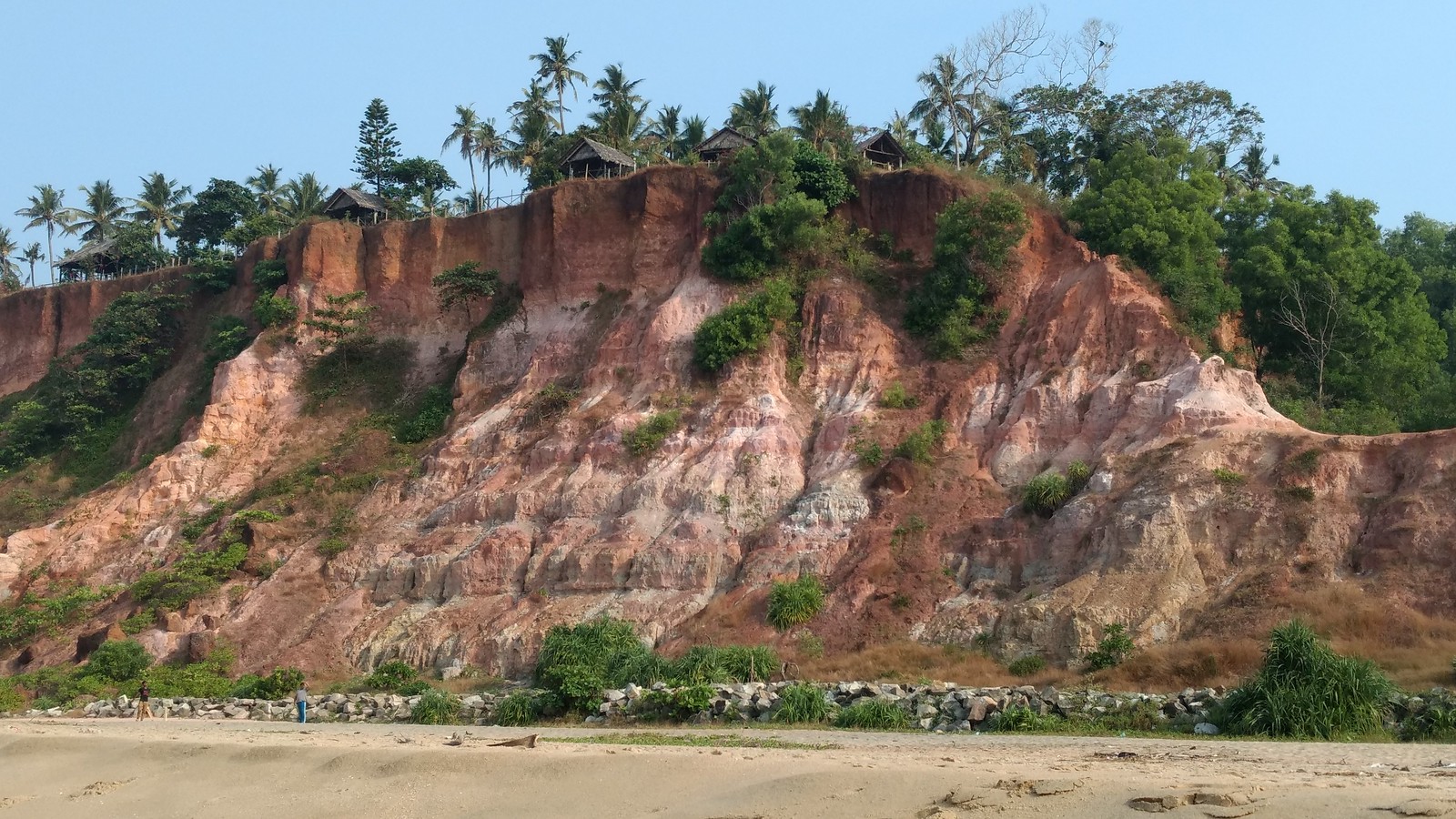 The cliffs backing Varkala Beach.
The cliffs backing Varkala Beach.
 Our teachers for our cooking lesson.
Our teachers for our cooking lesson.
 Many Hindus come to Varkala Beach to make an offering to their deceased loved ones. Hindu priests set up on the beach to be available to perform the rituals for the people who come for this.
Many Hindus come to Varkala Beach to make an offering to their deceased loved ones. Hindu priests set up on the beach to be available to perform the rituals for the people who come for this.
All good things come to an end, and so after bidding Shaji goodbye, we left for Alleppey in the north. Alleppey is a main departure point for houseboat trips through the Kerala backwaters where we took an overnight houseboat. This houseboat tour also included a paddled boat ride the next day. The houseboat was nice, but it had lights on it that looked straight out of Vegas, so not quite what we were looking for…but other than that, the boat was very comfortable, the food was very good, and we slept well. The canoe trip was hot in the sun, but the backwaters are nice and peaceful, and we’re glad we did both so we could see how villagers live in that area.
The only big sight that I knew I would regret not seeing was the ancient city of Hampi. India is a very big country, and getting to Hampi took a few days, so we elected to stop for a few nights in Fort Kochi and a few nights in Goa en route. Fort Kochi was the most touristy place we went in India, with western cafes and restaurants, but if you could look past that and just enjoy the good french coffee, it was a nice place and we also found good local food. The highlight, though, was on the beach in the form of giant, levered Chinese fishing nets, which are still in use today, although we didn’t see the fishermen catch much. We also went to a traditional Kathakali dance/drama performance, an art form that originated in Kerala in the 2nd century AD. It involves elaborate makeup that takes well over an hour to put on. It was impressive, and very different from anything we’d call “dance” today.
 Chinese fishing nets at sunset in Fort Kochi.
Chinese fishing nets at sunset in Fort Kochi.
 Man walking out on the pole to lower the net into the sea.
Man walking out on the pole to lower the net into the sea.
 Kathakali performers. They represent gods and demons.
Kathakali performers. They represent gods and demons.
Goa was made world famous as a stop on the “hippie trail” in the 60s, and its beaches (and parties) are legendary. It’s calmed down these days, at least on the beach we visited. The beaches are beautiful, but very developed so we were glad we only spent a few days there. We did eat some vindaloo, and it was good and more vinegary than any we’ve had at home.
From Goa we went to Hampi, staying in Hosapete. Hampi is a Unesco World Heritage Site, and was the prosperous capital of the Hindo Vijayanagara Empire in the 14th century. According to Wikipedia, by 1500, it was the world’s second largest city after Beijing, and probably India’s richest at the time. In 1565, it was conquered, pillaged and destroyed by the mogul armies of the sultanate, after which Hampi remained in ruins. It is huge, and a lot of it is in true ruins but there are certainly some beautiful buildings intact, plus the setting is gorgeous. The huge rocks in the area reminded us of Madagascar. My biggest highlight? The royal elephant stables. So hard to imagine something like that existed!
 We’re standing in one of the royal elephant stables.
We’re standing in one of the royal elephant stables.
 One of the main attractions in Hampi. The wheels on this stone carriage used to work.
One of the main attractions in Hampi. The wheels on this stone carriage used to work.
After Hampi we went to Hyderabad only as a stopover to plan our next move, which was to see Bengal tigers in one of India’s tiger reserves. We saw two sides of Hyderabad, the newer area where all the multinational tech companies have a presence, and the older side where you wonder if anyone has a computer. I braved getting a haircut there, and after drawing several illustrations about how I wanted the back to look, the hairdresser did a pretty good job. It’ll do anyway until we get home.








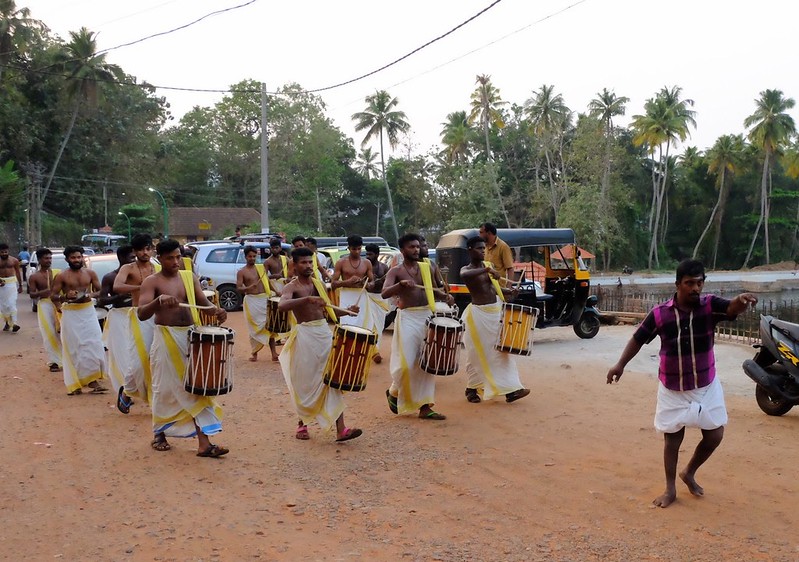










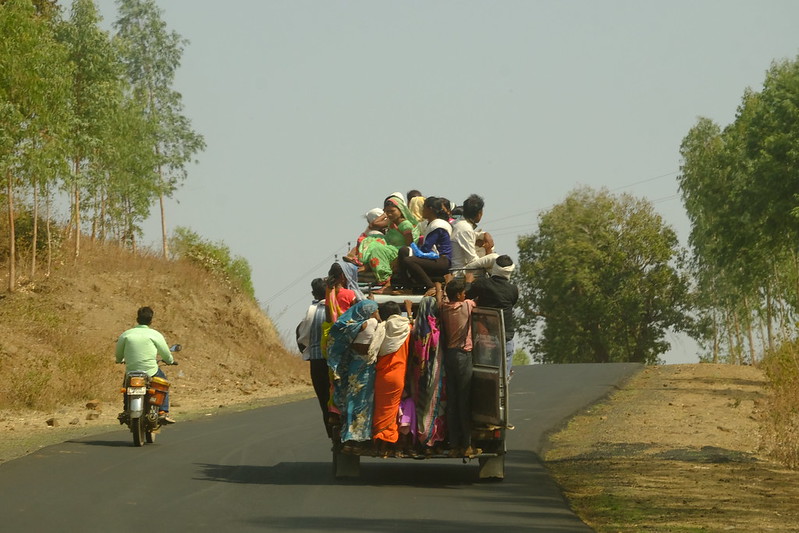
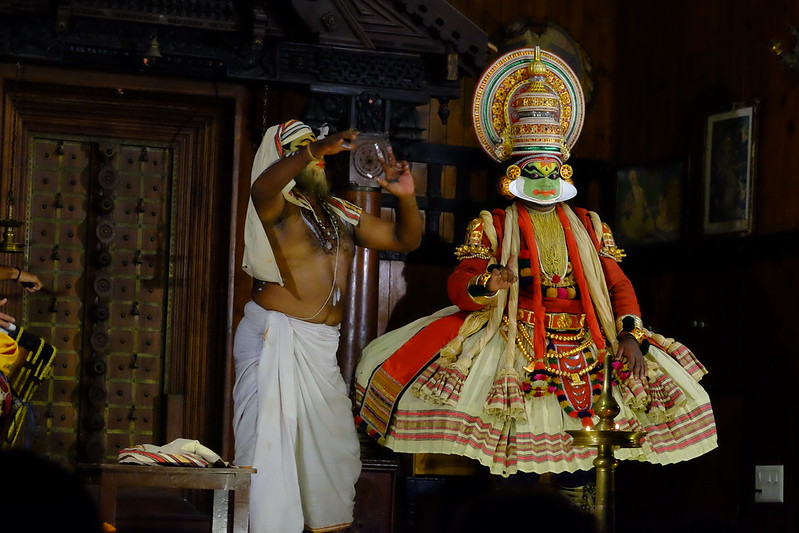












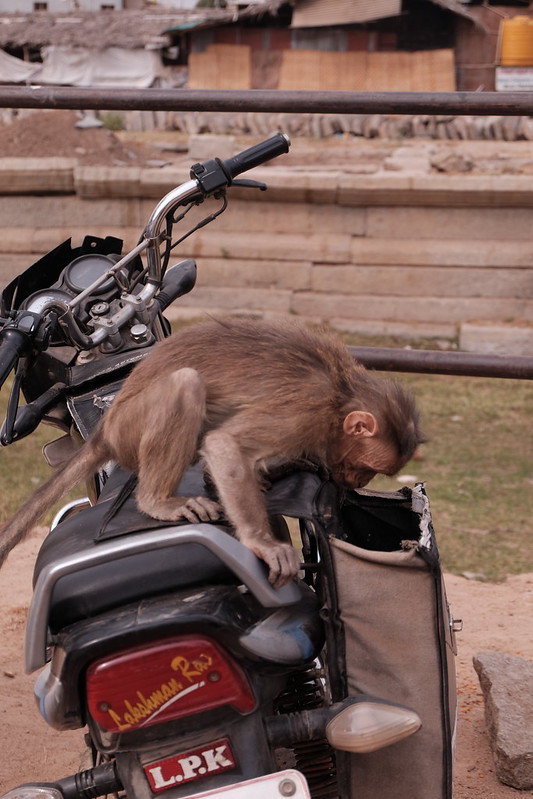

4 replies